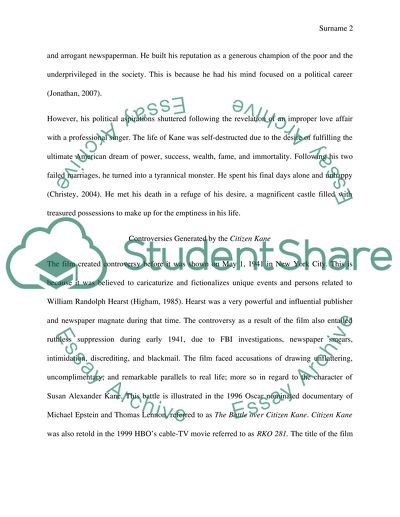Cite this document
(The Explanation for the Dying Words of Charles Foster Kane in the Film Essay Example | Topics and Well Written Essays - 1750 words, n.d.)
The Explanation for the Dying Words of Charles Foster Kane in the Film Essay Example | Topics and Well Written Essays - 1750 words. https://studentshare.org/visual-arts-film-studies/1651947-the-explanation-for-the-dying-words-of-charles-foster-kane-in-the-film
The Explanation for the Dying Words of Charles Foster Kane in the Film Essay Example | Topics and Well Written Essays - 1750 words. https://studentshare.org/visual-arts-film-studies/1651947-the-explanation-for-the-dying-words-of-charles-foster-kane-in-the-film
(The Explanation for the Dying Words of Charles Foster Kane in the Film Essay Example | Topics and Well Written Essays - 1750 Words)
The Explanation for the Dying Words of Charles Foster Kane in the Film Essay Example | Topics and Well Written Essays - 1750 Words. https://studentshare.org/visual-arts-film-studies/1651947-the-explanation-for-the-dying-words-of-charles-foster-kane-in-the-film.
The Explanation for the Dying Words of Charles Foster Kane in the Film Essay Example | Topics and Well Written Essays - 1750 Words. https://studentshare.org/visual-arts-film-studies/1651947-the-explanation-for-the-dying-words-of-charles-foster-kane-in-the-film.
“The Explanation for the Dying Words of Charles Foster Kane in the Film Essay Example | Topics and Well Written Essays - 1750 Words”. https://studentshare.org/visual-arts-film-studies/1651947-the-explanation-for-the-dying-words-of-charles-foster-kane-in-the-film.


